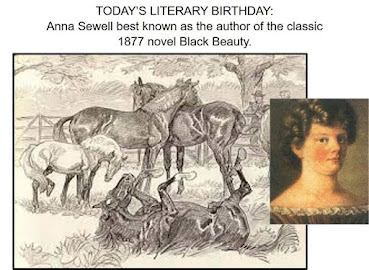She belonged to a deeply religious family, her mother expressed her religious faith most noticeably by authoring a series of evangelical children's books, which Anna helped to edit.
When Anna was 14 an injury to her ankles caused her to become an invalid. Likely, because of mistreatment of her injury, Anna was unable to stand without a crutch or to walk for any length of time for the rest of her life. For greater mobility, she frequently used horse-drawn carriages, which contributed to her love of horses and concern for the humane treatment of animals.
Although Sewell died five months after the book appeared (the cause of her death has been attributed variously to tuberculosis and hepatitis), she lived long enough to learn that she had written a bestseller. The book has sold over 50 million copies in total, making it one of the bestselling books in English. It was Sewell’s only novel. Sewell died in 1878, but had been an invalid for much of her life; she was confined to her family home for much of her life.
Sewell’s unusual conceit was to tell the story from the perspective of the horse rather than have a human or impersonal ‘omniscient’ narrator. This makes it the ancestor of – and a possible influence on – some notable later animal-narrated stories, such as Rudyard Kipling’s ‘The Maltese Cat’ (1895), which centres on a polo match told from the perspective of the ponies.
AND DID YOU KNOW: Anna Sewell’s mother was also a successful author. Mary Wright Sewell (1797-1884) wrote a number of juvenile bestsellers and was a successful poet as well as an author of children’s fiction. Among her biggest-selling works was Mother’s Last Words, ‘a story of two boys kept from evil courses by their mother’s last words ‘, which sold over a million copies. However, her daughter’s attitude to her one novel was quite different: Anna Sewell did not write Black Beauty specifically for children. Rather, she wished to highlight the plight of animals and the way horses were treated in Victorian England, but did not single out children as her readership.
Building Great Collections, One Fine Book at a Time
Visit us at BlindHorseBooks.com



Comments
Post a Comment